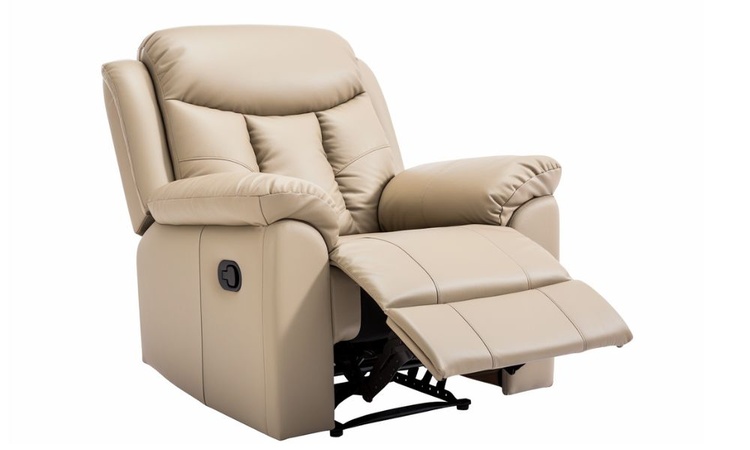Buying a Reclining Chair in 2025: A Guide to Balancing Price and Comfort
A recliner is more than just a seat, it’s a haven for relaxation and a tool for pain relief. Whether you’re recuperating after a long day at work, recovering from surgery, or simply craving a cozy corner, choosing the right recliner requires balancing physical needs, aesthetic preferences, and practicality. This guide will explore the diversity of recliners, breaking down their styles, materials, health benefits, and key factors to help you make an informed decision.

What styles of recliners are available in 2025?
In 2025, recliner styles have evolved to cater to diverse tastes and needs. Traditional recliners feature a classic design with padded armrests and a lever for reclining. Modern recliners often boast sleek lines and minimalist aesthetics, fitting seamlessly into contemporary interiors. Wall-hugger recliners are perfect for small spaces, as they can be placed close to walls while still fully reclining. Lift chairs, which help users stand up easily, have become increasingly popular among those with mobility issues. For the tech-savvy, smart recliners with built-in massage features, USB ports, and voice control capabilities are now widely available.
How do you choose the right recliner for your space and personality?
Selecting the perfect recliner involves considering both your living space and personal style. Measure your room carefully, ensuring there’s enough clearance for the chair to fully recline. Consider the overall decor of your home; a leather recliner might suit a traditional setting, while a fabric-upholstered model could blend well with a more casual atmosphere. Think about your daily routines and how you’ll use the chair. If you enjoy reading, look for a recliner with good head and neck support. For movie enthusiasts, cup holders and storage compartments might be essential features. Remember, the right recliner should not only fit your space but also reflect your personality and lifestyle.
Why do materials matter: durability, comfort, and cost?
The materials used in a recliner significantly impact its durability, comfort, and price. Leather recliners are known for their longevity and easy maintenance but come at a higher cost. They offer a luxurious feel and improve with age, developing a rich patina. Fabric upholstery provides more options in terms of colors and patterns, often at a lower price point. It can be more breathable than leather but may require more frequent cleaning. Microfiber is a popular choice for its softness and stain-resistant properties. For the frame, hardwoods like oak or maple ensure stability and longevity, while engineered wood can offer a more budget-friendly option without significantly compromising durability.
What practical considerations should you keep in mind: budget and space?
When shopping for a recliner in 2025, budget and space remain crucial factors. Determine your spending limit before starting your search, as recliners can range from budget-friendly options to high-end luxury models. Consider the long-term value; a higher initial investment in a quality recliner might save money over time due to increased durability. Space considerations are equally important. Measure not only the area where the chair will sit but also the path to that location, ensuring doorways and hallways can accommodate the chair’s dimensions. For smaller spaces, look into wall-hugger models or recliners with a smaller footprint when fully extended.
How has sustainability and durability evolved in recliner manufacturing?
In 2025, sustainability has become a key focus in recliner manufacturing. Many companies now use eco-friendly materials such as recycled fabrics, sustainably sourced wood, and water-based adhesives. Look for certifications like FSC (Forest Stewardship Council) for wood components and GOTS (Global Organic Textile Standard) for organic fabrics. Some manufacturers have introduced biodegradable or easily recyclable components, reducing the environmental impact at the end of the chair’s life. Durability has also improved, with advancements in material science leading to more resilient fabrics and longer-lasting mechanisms. This focus on sustainability and durability not only benefits the environment but also ensures that your recliner remains a comfortable part of your home for years to come.
What are the pricing trends and top providers for recliners in 2025?
As of 2025, the recliner market offers a wide range of options to suit various budgets and preferences. Here’s a comparison of some top providers and their offerings:
| Provider | Model | Key Features | Cost Estimation |
|---|---|---|---|
| ComfortPlus | EcoLux 2025 | Eco-friendly materials, smart features | £800 - £1,200 |
| RelaxMaster | PowerLift Pro | Advanced lift mechanism, massage function | £1,200 - £1,800 |
| ErgoDelight | SpaceSaver X | Compact design, high-grade leather | £600 - £900 |
| TechRecline | SmartLounge 5.0 | AI-powered adjustments, voice control | £1,500 - £2,500 |
| ClassicComfort | Timeless Traditional | Hardwood frame, classic design | £400 - £700 |
Prices, rates, or cost estimates mentioned in this article are based on the latest available information but may change over time. Independent research is advised before making financial decisions.
The recliner market in 2025 shows a trend towards increased functionality and sustainability, often reflected in the pricing. Budget-friendly options like ClassicComfort’s Timeless Traditional offer basic features at a more accessible price point. Mid-range options such as ComfortPlus’s EcoLux 2025 balance eco-friendly materials with smart features. For those seeking top-of-the-line technology and comfort, TechRecline’s SmartLounge 5.0 represents the higher end of the market with its AI-powered adjustments.
When choosing a recliner, consider the balance between initial cost and long-term value. Higher-priced models often offer extended warranties, better durability, and more advanced features that may justify the investment over time. However, there are quality options available at every price point, ensuring that comfortable relaxation is accessible to a wide range of consumers in 2025.




